The U.S. EPA may be reaching the end of its four-year PFAS Strategic Roadmap, but there are still a few loose ends to tie up. This summer also brought us plenty of state-level PFAS action as at least five states enacted bans on PFAS in consumer products. In this post, we look at some recent actions and those that might be taken before the end of 2024.
CERCLA Hazardous Substances Designation in Effect
The CERCLA (Comprehensive Environmental Response, Compensation, and Liability Act/Superfund) Hazardous Substances designation of PFOA and PFOS went into effect on July 8th. We created an Information Sheet on what the CERCLA designation means for our customers and how Pace® can help. Download the Info Sheet.
Fifth Round of UCMR 5 Data Released
In July, the U.S. EPA released another round of data from UCMR 5 (Fifth Unregulated Contaminant Monitoring Rule) and published an analysis on the UCMR 5 website. While the first round of sampling is not scheduled to be completed until December 2025, here are some key highlights:
- 6400+ Public Water Systems (PWS) have reported results.
- Of the unregulated contaminants, only lithium was found in concentrations above the reference limit. However, that was the case in nearly 25% of systems.
- 3400+ PWS have reported complete results for PFAS regulated under the NPDWR (National Primary Drinking Water Regulations). *
- Percentages of PWS with averages greater than the MCL include 9.1% - PFOS, 7.1% - PFOA, 0.0% - HFPO-DA, 0.8% - PFHxS, and 0.1% - PFNA.
- For contaminants included in the Hazard Index (HFPO-DA, PFHxS, PFNA, PFBS), 1.0% of those PWS reporting a full set of results had levels above the limitless value of 1.
- 11% of PWS reported one or more averages greater than the MCL set by the NPDWR. This is close to the EPA’s original estimate that 10% of PWS would need to take some remedial action. However, PWS still have until 2027 to complete NPDWR sampling and another two years after that to implement changes to address elevated levels of PFAS.
* Although the UCMR program typically deals only with unregulated contaminants, five PFAS were regulated after UCMR 5 had been finalized. The compounds are still included in UCMR 5 sampling requirements.
PFAS in Pesticides
In the past, we have reported on studies that found PFAS in pesticides not originally formulated with PFAS as an active ingredient. Researchers found that PFAS can leach from the containers used to store the pesticides. Now, a peer-reviewed study published by Environmental Health Perspectives has found PFAS make up 14% of the active ingredients in pesticides and were also listed as inert ingredients. The study includes tables of inert and active ingredients classified as PFAS, which may prove helpful when reading labels to assess PFAS in pesticide contents. Pace® also provides testing services that can analyze for PFAS in pesticides and other commercial/industrial products. Request a quote.
EPA Adds 12 PFAS to Fish Advisory Guidance
In July, the U.S. EPA added several PFAS to its fish advisory guidance for states, Tribes, and territories. Five PFAS were listed as Contaminants to Monitor for advisories: PFDA, PFHxS, PFNA, PFOA, and PFOS. Because oral toxicity values have been established for these compounds, the agency believes elevated levels warrant public notice. The agency also recommends gathering data on concentrations of seven additional PFAS for which toxicity values have not been established: PFDS, PFDoA, PFHpS, PFOSA, PFTeDA, PFTrDA, and PFUda (also referred to as PFUnA and PFUnDA).
Pace® offers PFAS testing in biota, including fish tissue. Contact us to request a quote or for more information on sampling and testing procedures.
What We’re Watching
In the second half of 2024, here are a few actions we will be watching for.
RCRA Hazardous Constituents Proposal - On February 1, the U.S. EPA proposed two new rules to address PFAS environmental contamination. The first proposal would designate 9 PFAS as hazardous compounds under the Resource Recovery and Conservation Act (RCRA). The second proposal seeks to amend the definition of hazardous waste under RCRA to give the EPA the authority to require corrective action, not only of substances identified as hazardous waste in the regulations but also of any substance that meets the statutory definition of hazardous waste. If finalized, these rules could significantly impact solid and liquid waste management and disposal practices.
U.S. EPA Information Collection Rule - The EPA recently proposed an Information Collection Rule (ICR) focused on PFAS in wastewater influent, effluent, and biosolids. If finalized, this rule will impact the country’s largest publicly owned treatment works (POTWS). Our recent webinar discussing this important proposal is now available on demand: US EPA Information Collection Rule (ICR) Proposal for PFAS and NPDES
State Limits and Bans on PFAS
The chart below shows state limits and bans enacted over the last couple of months.
|
|
|
|
|
Colorado |
Intentionally added PFAS in outdoor apparel for severe wet conditions unless accompanied by a disclosure (effective Jan 1, 2025); cleaning products that are not medical floor maintenance products, cookware, dental floss, menstruation products, and ski wax (effective Jan 1, 2026); installing artificial turf with intentionally added PFAS (effective Jan 1, 2026); medical floor maintenance products, textile articles, outdoor apparel for severe wet conditions, and food equipment intended primarily for use in commercial settings (effective Jan 1, 2028) |
|
|
Connecticut |
Soil amendments containing biosolids or wastewater sludge (effective Oct 21, 2024); Outdoor apparel for severe wet conditions unless accompanied by a disclosure (effective Jan 1, 2026); Banned unless prior notification and labeling: Apparel, carpets and rugs, cleaning products, cookware, cosmetics (with some exceptions), dental floss, fabric treatments, menstruation products, textile furnishings, ski wax, upholstered furniture (effective July 1, 2026); Apparel, turnout gear, carpets or rugs, cleaning products, cosmetics (some exemptions), dental floss, fabric treatments, children’s products, menstruation products, textile furnishings, ski wax, upholstered furniture, outdoor apparel for severe wet conditions (effective Jan 1, 2028) |
|
|
New Hampshire |
Intentionally added PFAS in carpets or rugs, cosmetics, fabric treatments, feminine hygiene products, fluorine-treated containers, food packaging and containers, juvenile products, personal protective equipment, dental floss, and upholstered furniture. (effective Jan 1, 2027) |
|
|
Note: New Hampshire HB 1415 was passed by both houses but vetoed by the Governor as being too broad and conflicting with prior legislation. This law would have held property owners responsible for remediation if total concentrations of regulated PFAS in ambient groundwater exceeded 100 ppt (parts per trillion). |
||
|
New York |
Prohibits the sale of playground surfacing materials that contain PFAS. |
|
|
Rhode Island |
Intentionally added PFAS in artificial turf, carpets or rugs, cookware, cosmetics, fabric treatments, juvenile products, menstrual products, ski wax, textiles (effective Jan 1, 2027) Outdoor apparel for severe wet conditions (effective Jan 1, 2029) |
|
|
Rhode Island |
Postpones the ban on PFAS in food packaging until January 1, 2025, and in processing agents until July 1, 2027. |
|
|
Vermont |
Intentionally added PFAS in cosmetics, menstrual products, aftermarket stain and water-resistant treatments for rugs or carpets, cookware, food packaging, incontinency protection products, juvenile products, residential rugs and carpets, ski wax, textiles or textile articles, artificial turf, PPE intended for use in firefighting (effective Jan 1, 2026) Outdoor apparel for severe wet conditions (effective July 1, 2028) |
|
On-Demand Webinars
Between visiting customer sites and attending conferences, our PFAS team delivered several webinars on key topics this summer. These are now available on-demand.
US EPA Information Collection Rule (ICR) Proposal for PFAS and NPDES
EPA PFAS Test Methods Are Now Final, What That Means for Wastewater and Solid Waste Professionals
Is PFAS Sample Cross-Contamination Caused by Sampling?
How Can We Help?
If you have questions about PFAS testing or our specific services, reach out to us. When you are ready, you can also request a quote for any of your testing needs.




.png)